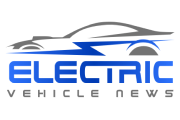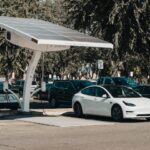
Technology has its method of development and operates closely with the automotive industry. Every day, there is technological advancement and innovation from it. Nowadays, automobile makers tend to develop environmentally friendly vehicles, focusing on the decrease in fossil fuels. Most likely, they are seeking renewable energy sources for their vehicle.
In this case, electric vehicles are the ideal choice as they are not polluting and stable in terms of linear performance. The efficiency of an electric car is its most important aspect. In contrast, fuel vehicles have distinct advantages and features. Because, fuel vehicles take a little time to power up; however, electric vehicles require a longer time to be fully charged.
What are Electric Vehicles (EVs)?
An electric vehicle is fitted with an electric motor that includes a battery pack, an electric motor, and electric transmission. It has stored energy in batteries and is sent into the motor through an electronic controller. The motor converts electrical energy to mechanical energy using the transmission that drives the wheels. The electric car runs quietly in operation because of an electric motor.
There are different types of electric vehicles –
- Battery Electric vehicles work totally on a battery that is charged after plugging into the electricity grid. It doesn’t have a fuel tank.
- Hybrid Electric vehicles are low-emission vehicles that utilize electric motors to assist fuel-powered engines.
- Plug-in Electric vehicles acquire energy from an internal combustion motor (fuel) and an electric motor (battery). Depending on the situation, they can be operated in all-electric or all-fuel mode.

What are Fuel Vehicles?
The fuel vehicle is a vehicle that has an Internal Combustion (IC) engine that burns fuel to move the vehicle. The power train for a fuel engine car comprises an engine and transmission, driveshaft axles, and differentials. An IC engine ignites fuel and air with sparks (through spark plugs) and produces mechanical energy.
The energy generated by the mechanical process is transmitted through the motor, which then relays the energy to the wheels through driveshafts and the differential. In layman’s terms, an engine burns fuel to produce energy that propels the vehicle.
There are different types of fuel vehicles-
- Diesel Vehicles
- PetrolVehicles
EV vs. Fuel Vehicles Comparison
| Parameter | Electric Vehicle | Fuel Vehicle |
| Fuel | Electric Energy | Gasoline (Petrol, Diesel) |
| Power | Electric Motor | Internal Combustion Engine |
| Cost | High Price (Expensive) | Affordable than EVs |
| Cost of Fuel | Low | High |
| Cost of Maintenance | Low | High |
| Carbon Emissions | Zero | High |
Key Points About Electric Vehicles
- EVs represent only 1-3% of all passenger cars. However, 30% of all cars are expected to be electric by 2030.
- 6.5 million EVs were in use worldwide by 2020, an increase from 4.5 million in 2019.
- China is at the top of electric vehicle usage with an estimated 4.5 million electric vehicles in use, representing 40% of the worldwide electric vehicle fleet. It is followed closely by Europe, with 3 million electric vehicles operating and accounting for 30% of the world’s electric vehicles.
- 7% of Americans have an electric vehicle, and 39% of Americans have stated that when they next purchase a car, they’re likely to choose an electric vehicle instead of a fuel-powered vehicle.
Electric Vehicles: Market Value
Multiple factors drive the success of EVs. Sustained policy support is the main pillar. Public spending on EV subsidies and incentives nearly doubled in 2021 to nearly US$ 30 billion. The global market value of electricity for EV charging is projected to grow over 20-fold in the APS, reaching approximately US$ 190 billion by 2030, equivalent to about one-tenth of today’s diesel and gasoline market value. The global electric vehicle (EVs) market is predicted to experience a significant growth rate of 23.5 percent by 2028.
Development of the EV Industry
Growing concern about pollution from urban areas is among the main drivers behind the rapid growth of the EV market. Conventional fuel vehicles are one of the main causes of pollution in the air. This makes it necessary for government agencies to impose strict regulations and rules on automakers to limit the emissions of vehicles. Electric vehicles can help reduce the dependence on oil-based fuels and substantially reduce greenhouse gases.
The governments of various economies are also participating in increasing sales of electric vehicles, giving incentives to consumers for the sale of EVs. Government policies that support EV sales are aiding in the rise of the demand for EVs over the last few years, driving growth in the market.
Conclusion
It’s true that electric automobiles are eco-friendly and are lower maintenance expenses. However, fuel vehicles are used more often than their electric counterparts due to their lower price of ownership and greater driving range. In contrast, a new study shows that in 2030, most automobile sales will include battery electric cars (BEV). In addition, it is predicted that diesel-powered and gasoline-fueled vehicle sales will fall by approximately 50%.
To meet the projected increase in electric vehicle sales, the automakers plan to introduce the latest Battery Electric Vehicles (BEVs) that are high-end in performance, efficiency, and lower costs for acquisition to preserve their tradition and keep their place in the car market.
RationalStat can help you with the market and industry reports for global and regional electric vehicle reports with insights and market intelligence.






